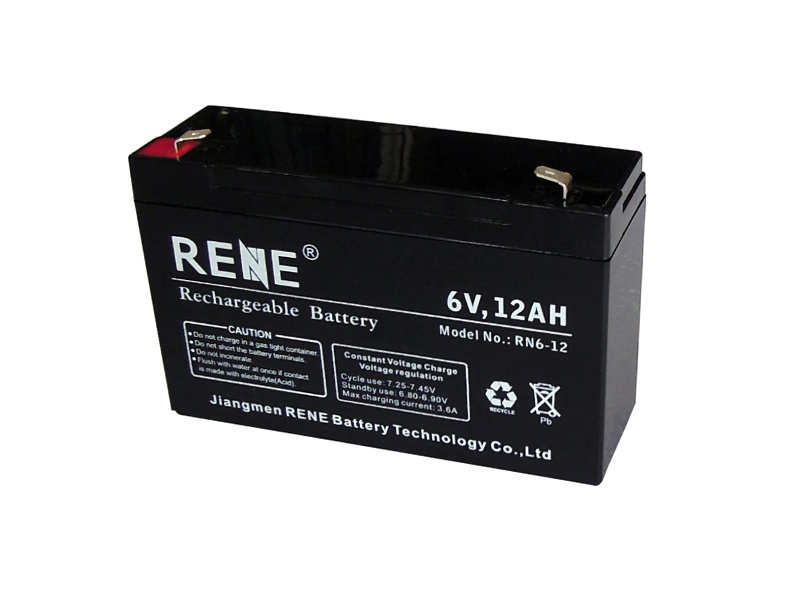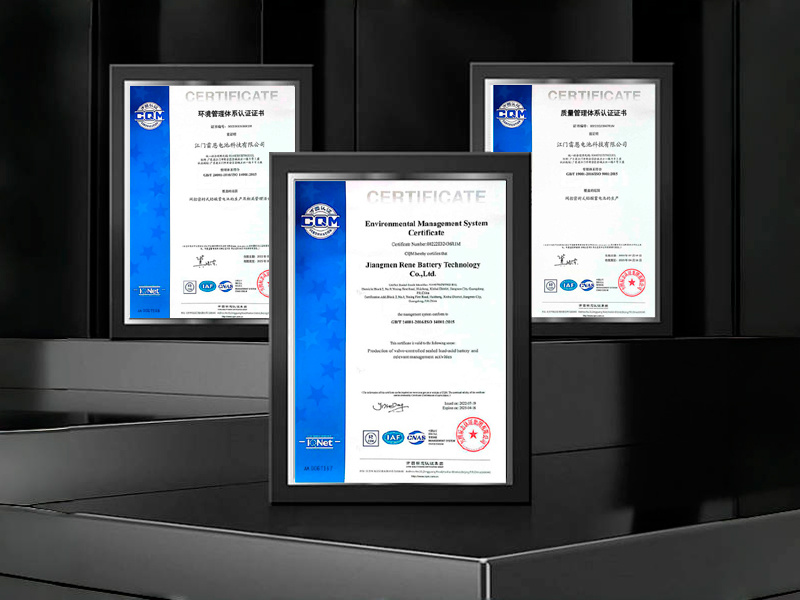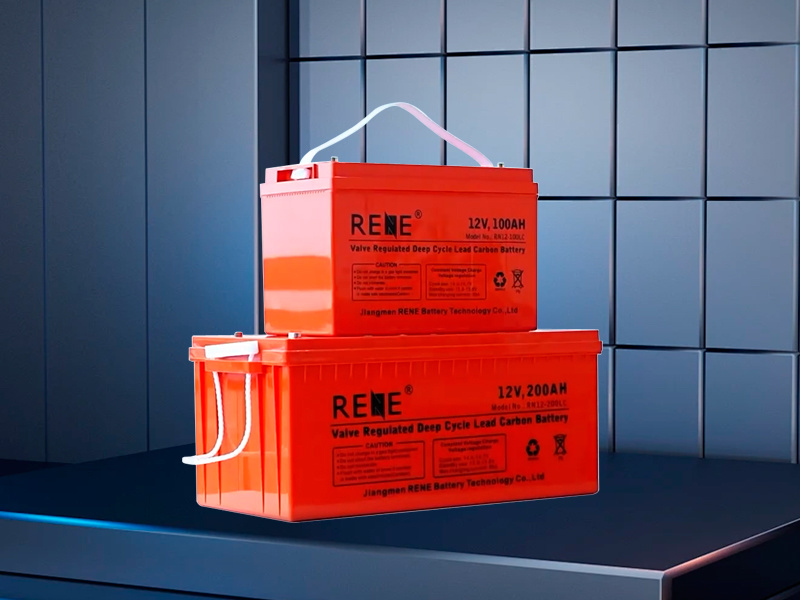Jiangmen Rene Battery Technology Co., Ltd.
Essential Tools for Spotting VRLA Battery Problems: A Comprehensive Guide
2025-07-22
Essential Tools for Spotting VRLA Battery Problems Table of Contents Understanding VRLA Batteries Common VRLA Battery Issues Importance of Regular Maintenance Essential Tools for Diagnosing VRLA Battery Issues Digital Multimeter Battery Analyzer Load Tester Hydrometer Infrared Thermometer Step-b

Essential Tools for Spotting VRLA Battery Problems
Table of Contents
- Understanding VRLA Batteries
- Common VRLA Battery Issues
- Importance of Regular Maintenance
- Essential Tools for Diagnosing VRLA Battery Issues
- Step-by-Step Guide to Diagnosing VRLA Battery Issues
- Best Practices for VRLA Battery Care
- Frequently Asked Questions
Understanding VRLA Batteries
Valve Regulated Lead Acid (VRLA) batteries are a popular choice for various applications, including uninterruptible power supplies (UPS), emergency lighting, and telecommunications. Unlike traditional lead-acid batteries, VRLA batteries utilize a sealed design that minimizes maintenance and improves safety. Understanding the unique characteristics of VRLA batteries is crucial for identifying potential issues before they escalate.
Common VRLA Battery Issues
VRLA batteries are susceptible to a range of problems. Identifying these issues early can prevent extensive damage and loss of power. Common problems include:
- **Sulfation**: This occurs when lead sulfate crystals build up on the battery plates, reducing capacity and performance.
- **Overcharging**: Excessive voltage can lead to gassing, plate corrosion, and even battery failure.
- **Undercharging**: Insufficient charging can cause stratification, where the electrolyte becomes unevenly distributed, leading to sulfation.
- **Temperature Variations**: Extreme heat or cold can affect battery efficiency and lifespan.
- **Physical Damage**: Cracks or leaks can result in electrolyte loss and failure.
Importance of Regular Maintenance
Regular maintenance is essential for prolonging the life of VRLA batteries. By routinely inspecting and testing your batteries, you can identify potential issues early and take corrective actions. Implementing a maintenance schedule not only ensures optimal performance but also helps in avoiding unexpected failures.
Essential Tools for Diagnosing VRLA Battery Issues
To diagnose problems effectively, having the right tools is crucial. Below are some of the essential tools that every technician or enthusiast should have in their arsenal.
Digital Multimeter
A digital multimeter is a multifunctional tool that measures voltage, current, and resistance. For VRLA batteries, it is invaluable for:
- Checking the voltage levels of the battery to ensure they are within the recommended range.
- Diagnosing whether the battery is charging correctly.
- Testing for short circuits or other electrical issues within the system.
A digital multimeter is a fundamental tool for anyone working with VRLA batteries, making it a must-have in your toolkit.
Battery Analyzer
A specialized battery analyzer goes beyond basic multimeter functions, providing in-depth analysis of battery health. Key features include:
- Capacity testing to measure how much charge a battery can hold.
- Internal resistance measurement to determine the battery's overall condition.
- Load testing capabilities to simulate real-world usage scenarios.
Investing in a quality battery analyzer can provide insights that are essential for maintenance and troubleshooting.
Load Tester
A load tester is essential for simulating the demands placed on a battery during regular operation. By applying a load, it can help determine if the battery can handle real-life conditions. This tool is critical for identifying weak or failing batteries, ensuring that only reliable power sources are in use.
Hydrometer
While VRLA batteries are sealed, a hydrometer can be used to gauge the specific gravity of the electrolyte in traditional lead-acid batteries. For those using hybrid systems or wanting to understand traditional units, a hydrometer remains a valuable tool for assessing battery health.
Infrared Thermometer
Temperature plays a significant role in battery performance. An infrared thermometer allows for non-contact temperature measurements, helping to identify hotspots that may indicate malfunction or impending failure. Monitoring thermal performance can prevent overheating, ultimately prolonging battery life.
Step-by-Step Guide to Diagnosing VRLA Battery Issues
Diagnosing problems with VRLA batteries can seem daunting. However, following a structured approach simplifies the process:
1. **Visual Inspection**: Begin with a thorough visual examination of the battery. Look for signs of corrosion, leaks, or physical damage.
2. **Check Voltage**: Use a digital multimeter to measure the voltage of the battery. Compare the readings with the manufacturer's specifications.
3. **Perform Load Tests**: Use a load tester to evaluate the battery's capacity under simulated load conditions.
4. **Analyze Data**: Cross-reference your findings with the battery's expected performance metrics.
5. **Consult a Battery Analyzer**: If issues persist, use a battery analyzer for deeper insights into the battery's health.
6. **Implement Maintenance**: Based on your findings, perform necessary maintenance or consider replacement options.
Best Practices for VRLA Battery Care
Taking proactive measures can significantly enhance the lifespan and reliability of your VRLA batteries. Here are some best practices:
- **Regular Testing**: Implement regular testing schedules using the tools discussed to catch issues early.
- **Avoid Overcharging**: Ensure your charging system is correctly calibrated to prevent overcharging.
- **Control Temperature**: Keep batteries in environments with regulated temperatures to mitigate performance issues.
- **Clean Terminals**: Regularly clean battery terminals to prevent corrosion and ensure good connectivity.
- **Follow Manufacturer Guidelines**: Always adhere to the manufacturer's recommendations regarding charging, maintenance, and replacement.
Frequently Asked Questions
1. How often should I test my VRLA batteries?
It is recommended to test VRLA batteries at least every six months, or more frequently if they are used heavily.
2. What are the signs that my VRLA battery needs replacement?
Signs include swelling, leaking, inability to hold charge, or consistently low voltage readings.
3. Can VRLA batteries be recharged?
Yes, VRLA batteries are rechargeable; however, proper charging protocols must be followed to avoid damage.
4. What is the lifespan of a typical VRLA battery?
The lifespan can vary, but VRLA batteries typically last between 3 to 5 years with proper maintenance.
5. Is it safe to dispose of VRLA batteries in regular trash?
No, VRLA batteries must be disposed of at designated recycling centers to prevent environmental contamination.
Conclusion
Spotting issues with VRLA batteries is not just about having the right tools; it’s about understanding the underlying principles that govern their performance. By familiarizing yourself with the essential tools and best practices outlined in this guide, you can confidently diagnose and maintain VRLA batteries, ensuring their efficiency and longevity. Regular testing and maintenance can save you time and resources, allowing you to rely on your power systems without worry. Equip yourself with the knowledge and tools necessary to handle VRLA battery issues effectively.
Key words:
Previous Page:














